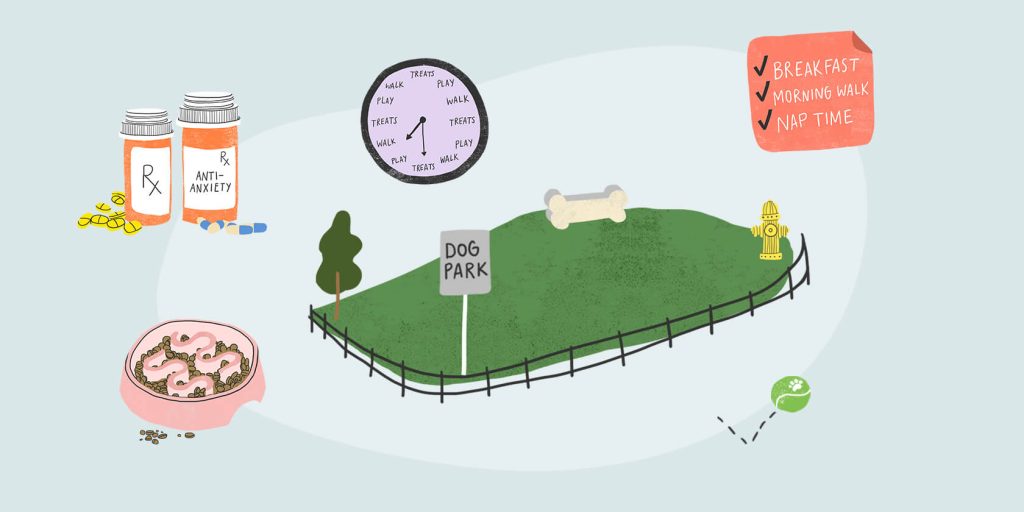How Changes in the Home Environment Affect Pet Behavior

Understanding the Link Between Home Changes and Pet Behavior
Our pets are highly sensitive to their environments, and any change can have a profound impact on their behavior. From moving to a new house to introducing new furniture, these modifications can create stress or excitement for animals. Being aware of these changes is essential for pet owners, as our pets often rely on a stable environment to feel secure.
- Pets react to sound: Animals, particularly dogs, have an acute sense of hearing. Noisy environments, such as nearby construction or loud celebrations, can lead to anxiety. For example, a sudden loud bang from fireworks can send a pet into hiding or cause them to bark uncontrollably.
- New smells: Pets experience the world largely through their sense of smell. Changes in furniture or decor can introduce unfamiliar scents into their environment. This can be especially true when new items are made from different materials or have lingering odors from factories or stores, which may confuse or distress them.
- Changes in routine: Alterations in daily schedules, such as a family member moving out or a new pet being introduced, can unsettle pets. For instance, a cat may become withdrawn when their primary caregiver starts working from home, disrupting their usual quiet time.
Understanding how these elements influence behavior is crucial for pet owners. Signs of stress in pets can manifest as excessive barking, aggression, or withdrawal. Paying close attention to these signs and addressing them promptly can help ensure a harmonious home. For instance, providing a safe, quiet space where your pet can retreat during chaotic periods can help them feel secure.
Why Focus on the Home Environment?
In Nigeria, many families live in dynamic situations with frequent changes—whether it’s moving houses due to work, welcoming extended family members, or simply rearranging the furniture. Therefore, recognizing how changes in the home environment affect pet behavior is especially important. Pets, like humans, thrive on stability, and providing them with a sense of predictability can lead to healthier and happier lives.
Moreover, it is not unusual for Nigerian families to have a mix of pets, from domestic cats and dogs to birds and reptiles. Understanding how each type of animal responds to environmental changes can vary significantly. For instance, a parrot may become more vocal in response to new sounds, while a dog may react with curiosity or fear to new sights or smells. By paying attention to your pet’s individual needs and preferences, you can help them adapt to any transition smoothly.
This article will explore the various factors that can disrupt a pet’s sense of security, providing practical advice on managing those changes effectively. This not only aids in maintaining your pet’s well-being but also enriches the overall experience of pet ownership, fostering a bond of trust and affection between you and your furry family members.

YOU MAY ALSO LIKE: Read read another article
The Impact of Environmental Changes on Pets
The home environment plays a crucial role in shaping pet behavior, and even seemingly minor changes can have significant effects on their emotional well-being. Animals are creatures of habit, and disruptions in their surroundings can lead to stress, anxiety, or even behavioral issues. Understanding the nuances of these reactions is vital for any pet owner looking to ensure a harmonious living space for their furry companions.
- Physical Layout Changes: Rearranging furniture or redecorating can alter a pet’s familiar territory. For example, moving the sofa from one side of the room to another can create a new dynamic in their environment. Dogs, who often patrol their domain, may feel the need to re-establish their sense of security, leading to behaviors such as excessive sniffing or pacing. Cats, on the other hand, may seek out new vantage points or hide in unexpected corners, exhibiting signs of stress until they acclimate.
- Introduction of New Family Members: Whether it’s a new human or another pet, bringing someone into the household can disrupt the established order. Dogs may exhibit signs of jealousy or possessiveness over their favorite toys, while cats might withdraw or show territorial behavior towards the newcomer. It’s essential to introduce new family members gradually and provide separate spaces to alleviate the tension during the transition.
- Seasonal Changes: The shifting seasons can also impact pet behavior. For instance, the onset of the rainy season in Nigeria can result in increased indoor time for pets. While dogs may enjoy splashing in puddles, they can become restless when cut off from their outdoor activities. Providing adequate playtime and engaging in indoor games not only helps manage this restlessness but also strengthens the bond between pet and owner.
The connection between home changes and pet behavior highlights the importance of maintaining a stable environment for pets. Understanding these behavioral responses not only helps identify stress factors but also enables pet owners to implement proactive measures. Creating safe zones, where pets can retreat during overwhelming moments, and establishing consistent routines will greatly benefit their emotional health.
Creating a Pet-Friendly Home
To cultivate a pet-friendly environment within the fluctuating dynamics of Nigerian households, awareness and adaption are key. Many pets, particularly dogs, thrive on both physical and emotional stability, and their happiness often translates to well-behaved companions. Finding ways to reduce stress, such as using calming techniques or engaging in regular exercise, can significantly enhance a pet’s comfort level amidst any changes.
Additionally, it is beneficial for pet owners to monitor and document their pets’ behavior during transitions. Keeping track of any unusual signs or patterns can shed light on how changes in the home environment affect pet behavior. Through attention and care, there is a strong opportunity for pet owners to provide an atmosphere of stability, enabling pets to thrive regardless of the external changes occurring around them.
| Behavioral Changes | Environmental Factors |
|---|---|
| Increased Aggression | Changes in space or stressors can elevate tension. |
| Fear and Anxiety | New sounds, people, or pets can trigger distress. |
| Destructive Behavior | Boredom from lack of stimulation increases chewing, scratching, and digging. |
| Changes in Routine | Altered feeding or walking schedules impact pet security. |
Home environments play a crucial role in shaping pet behavior. Pets are sensitive to their surroundings; even minor changes can lead to significant behavioral shifts. For instance, modifying your living space by introducing new furniture or decor can disrupt your pet’s established territory, causing stress and confusion. Behavioral consequences such as increased aggression or fear might manifest as your pet struggles to adapt to their changing territory.Additionally, a noisy household can lead to anxiety, particularly in sensitive or older pets. On the flip side, pets might resort to destructive behaviors when faced with boredom or a lack of stimulation, highlighting the essence of an engaging environment for pets. Properly managing their environment, therefore, is essential in ensuring pet well-being and behavioral stability. Exploring further into these environmental factors can provide insights into how to effectively support your pets through transitions.
LEARN MORE: This related article may interest you
Understanding Behavioral Signals in Pets
As pets adapt to changes in their home environment, they communicate their feelings and needs in various ways. Observing these behavioral signals is essential in discerning how your furry friends are truly affected. For instance, changes in body language are often the first indicators of stress or discomfort. A dog that normally greets you with wagging tails and enthusiastic barks may suddenly exhibit a low posture, tucked tail, or avoidance when a new piece of furniture enters the room. Similarly, a cat may show signs of aggression or withdrawal, emphasizing the need for pet owners to stay vigilant and responsive.
- Vocalizations: The sounds that pets make can offer insight into their emotional state. Increased barking, whining, or meowing often signals anxiety or distress. Understanding your pet’s usual vocal patterns can help you identify when something is amiss. For example, a normally quiet dog that suddenly barks excessively might be feeling unsettled by a recent change in the environment, prompting scrutiny of the new dynamics at play.
- Changes in Routine: Pets thrive on routine, and any alterations can disrupt their sense of stability. A pet that regularly goes for evening walks may exhibit signs of frustration or aggression if their schedule is disrupted. Maintaining a consistent feeding and exercise regimen amidst changes can alleviate some of the stress. Pet owners are encouraged to use positive reinforcement strategies, such as treats or praise, to reward pets for adapting to new routines comfortably.
- Physical Health Indicators: Behavioral adjustments are not the only signs to watch for; pets may also experience physiological changes. Pets subjected to stress might find it difficult to eat or may overeat as a coping mechanism. For example, if a noisy construction project is underway nearby, a dog may ignore meals entirely, raising concerns for potential health ramifications. Monitoring their food intake and weight becomes crucial during turbulent times.
Moreover, the impact of a pet’s social environment is also worth examining. In Nigeria, where families often share close quarters with extended relatives or friends, the introduction of new people may affect animal behavior significantly. Pets might feel overwhelmed in busy households, leading to increased anxiety. It’s essential for owners to create dedicated quiet spaces where pets can retreat when they need some alone time, especially in bustling environments. This type of sanctuary not only reassures pets but also maintains their psychological health.
The Importance of Consistency
Consistency is a vital element that can mitigate the adverse effects of environmental changes. Adapting to a new norm, whether it involves changes in household structure, decor, or social dynamics, is less daunting with a predictable routine. Engaging pets in daily activities, such as habitual play sessions or regular training exercises, fosters their security. Routine can serve as an anchor; thereby helping pets to navigate the emotional upheaval triggered by even the most minor changes to their environment.
Understanding the relationship between home changes and pet behavior underscores the importance of proactive communication and observation. By being attentive and attuned to the needs of their pets, owners can create a nurturing environment that supports their beloved companions through life’s transitions.
SEE ALSO: Click here to read another article
Conclusion: Nurturing Well-Being in a Changing Environment
In conclusion, the impact of changes in the home environment on pet behavior is profound and multifaceted. As illustrated, pets express their feelings and reactions through various signals—from body language to vocalizations—each offering unique insights into their emotional state. The importance of recognizing these signals cannot be overstated, especially in a vibrant and interconnected society like Nigeria where family dynamics frequently change, impacting our furry companions.
Furthermore, maintaining a stable routine amid alterations in the environment is crucial for easing stress and anxiety in pets. Whether it’s changes in household decor, schedules, or social interactions, implementing consistency helps fortify their sense of security. Moreover, simple measures like providing quiet retreats can protect pets from overwhelming situations, allowing them the space they need to adapt. Engaging in positive reinforcement also plays a pivotal role in helping our pets adjust to their new realities, creating a smoother transition for all household members.
Ultimately, a discerning pet owner should take a proactive approach, fostering an atmosphere of love and security. By understanding the intricacies of how environmental shifts affect pet behavior, owners can nurture a holistic environment that prioritizes their pets’ emotional and physical well-being. As we seek to support our beloved companions through the inevitable changes that life brings, a patient and observant approach can lead to stronger bonds and happier, healthier pets.


